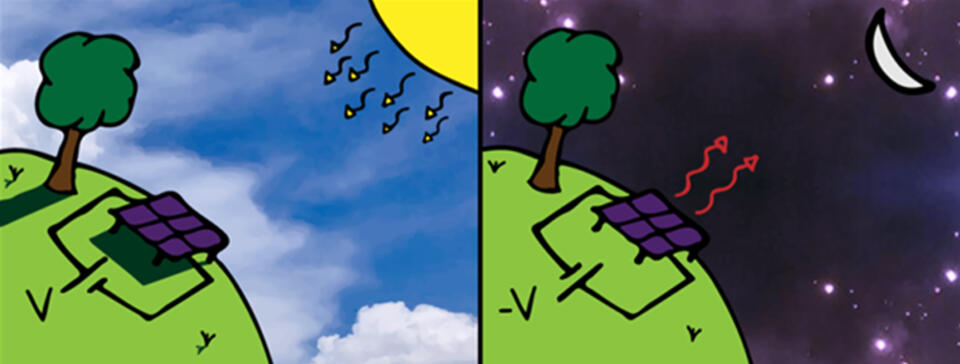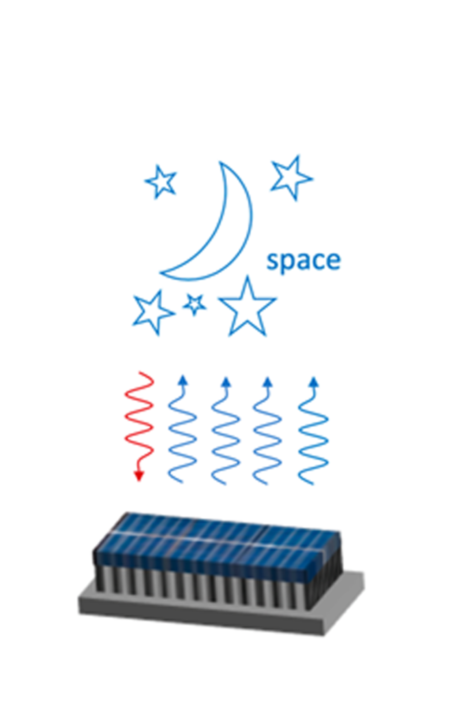
Sunny yield in the dark
For billions of years, the Sun has been supplying Earth with energy. Even the ancient Greeks, who allegedly used mirrors deflecting the sunlight to set fire to the sails of the Roman fleet during the siege of Syracuse (212 BC), already knew that the Sun not only had the capacity to provide warmth and to cause plants to thrive. However, many centuries would pass until someone tapped the Sun’s energy to generate electric current. In the 19th century, the French scientist Alexandre Edmond Becquerel found out that under sunlight batteries had a longer life and produced more power. In addition, he discovered that electrodes could be polarized by light incidence and generate current flow as a result – which is known as the Becquerel effect. In 1883, the first “classic” photo cell was produced from the chemical element selenium and ten years later the first solar cell that served to generate electricity.
Today, the expansion of photovoltaics is picking up more and more momentum. 2020 was the first year in which the capacities of solar PV systems at a level of 760 GW surpassed those of wind farms that achieved 743 GW, according to the current Renewables Global Status Report. However, with renewables accounting for around 20 percent of the worldwide energy mix, there’s clearly room for improvement. At least theoretically, this potential could be realized easily by tapping the Sun’s energy which on a single day would suffice to cover the worldwide annual demand.
How does an anti-solar cell work?
However, in practice, the Sun has a disadvantage: it doesn’t always shine and even in regions with many hours of sunshine, days with a brilliant blue sky are followed by dark nights, so when there’s no sunlight there’s no electricity. Research scientists at the University of California in Davis that have been tackling this problem are now setting their sights on a potential solution: anti-solar cells producing electricity even at times of total darkness.


In a nutshell, this is the principle behind it: A regular solar cell generates voltage by absorbing warm sunlight, thereby setting electrons in motion which in turn causes current to flow. The solar cells consisting of silicon use mainly the visible and short-wave infrared light in this process because it has more energy than long-wave thermal radiation. As a result, around 200 watts of power can be produced per square meter (11 square feet) of a solar panel array.
The anti-solar cell reverses this principle: “A regular solar cell generates power by absorbing sunlight, which causes a voltage to appear across the device and for current to flow. In these new devices, light is instead emitted and the current and voltage go in the opposite direction, but you still generate power,” says Jeremy Munday, a professor in the Department of Electrical and Computer Engineering at UC Davis. The light emitted by the anti-solar cell toward the cold night sky is thermal radiation. Although different materials have to be used for generating electricity in this way – a mercury alloy instead of silicon – the physics is the same, says Munday. According to the California researchers, the anti-solar cell could generate a maximum of 54 watts per square meter (11 square feet), which roughly equates to a quarter of a conventional solar cell’s output.
As this heat is flowing from the Earth to outer space, it [the anti-solar cell, editor’s note] is picking that off and converting that into power
Jeremy Munday, professor in the Department of Electrical and Computer Engineering at UC Davis
The novel supercell would also work during daytime either by blocking direct sunlight or by turning the solar panel away from the Sun. In combination with regular photovoltaic cells, the electricity demand could be covered around the clock in that way – “solar power” in 24/7 service, as it were. We’re excited to see when the scientists will present the first prototype.


